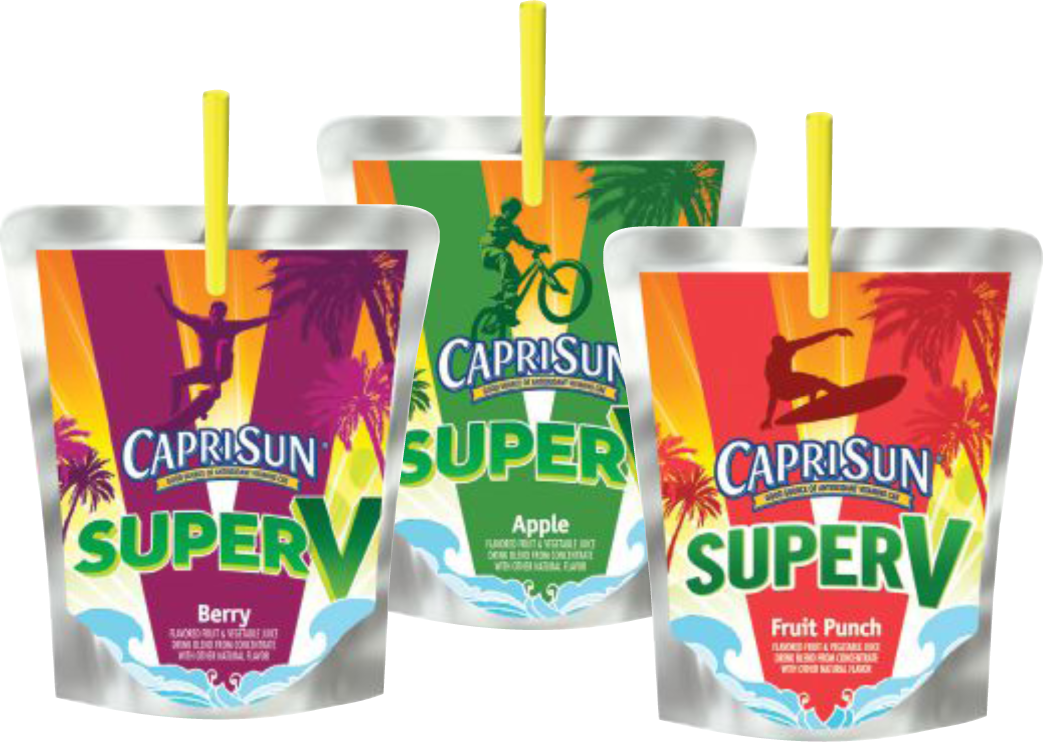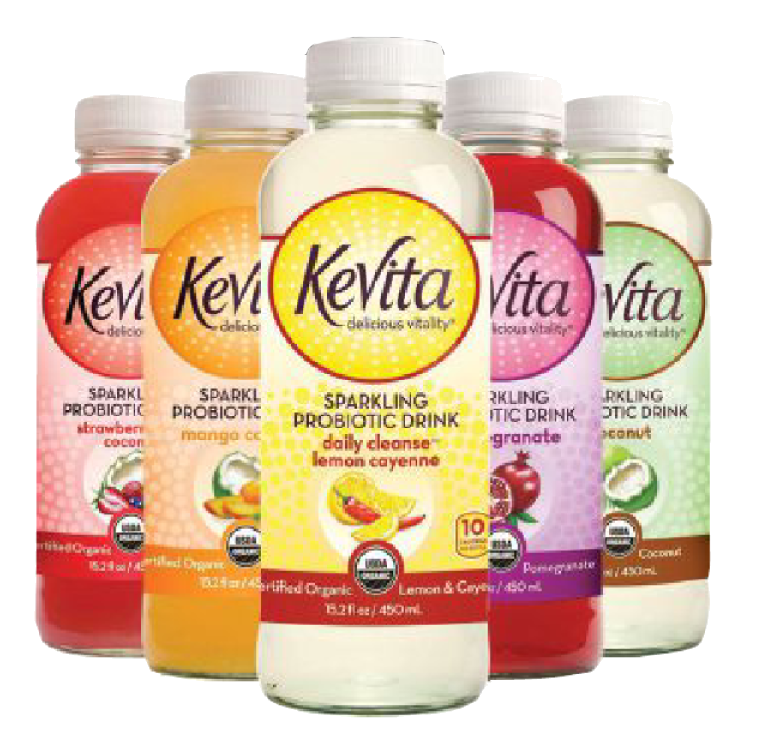According to an International Food Information
Council study, consumers place fiber sixth on their
lists of the Top 10 functional foods, says Erin Inventor,
marketing research manager for Tate & Lyle, Sycamore,
Ill. Recent research by Tate & Lyle also found that
47 percent of Americans say they need to consume
more fiber, and more than two-thirds understand that
fiber helps maintain healthy digestion and generally
supports good health, she adds.
Furthermore, more than 100 million Americans
experience digestive issues, according to a presentation
titled “Gut Health Beverages Done Right: Formulating
for Benefits” by Michael Bush, vice president of business
development for Ganeden Biotech Inc., Mayfield
Heights, Ohio. Plus, as the population ages, the demand
for digestive health benefits will increase, says Sam
Wright IV, chief executive officer of The Wright Group,
Crowley, La.
“There has been growing interest in digestive health
in recent years driven by the aging of the baby boomer
generation as well as the connection between digestive
health and immunity benefits,” he says. “Among the
many health-oriented ingredients available, probiotics
and especially fiber deliver benefits that consumers can
feel working. This is a big advantage.”
Most consumers are aware of the benefits of soluble
fiber, and awareness of probiotics has increased
significantly in recent years, he adds.
“The probiotic category is among the most complex of
any health ingredient sector because of the many specific
strains involved, their intellectual property and their
relative benefits,” Wright explains. “It is a tremendous
marketing challenge, but progress is being made.”
Prebiotics, on the other hand, are less understood by
consumers, but this will change in time, he says.
 Capri Sun Super V contains vegetable and fruit juices as well
as soluble corn fi ber. (Image courtesy of Kraft Foods Group Inc.)
Capri Sun Super V contains vegetable and fruit juices as well
as soluble corn fi ber. (Image courtesy of Kraft Foods Group Inc.)
Jennifer Intagliata, business development
director of nutritional beverages for
Beloit, Wis.-based Kerry Ingredients &
Flavours, a division of Kerry Group,
adds that probiotics are considered fairly
mainstream in the nutritional segment,
and consumers are familiar with them.
When it comes to prebiotics, however,
consumers need more education to
increase their knowledge about what they
are and what their benefits are, she says.
The company offers Emulgold soluble
dietary fiber that has been clinically
proven to enhance the satiety effect and
provide prebiotic benefits, says Nick Bruns, global
strategic marketing director of pharma, nutritional and
functional ingredients. Research has found that the
ingredient possesses properties to protect the probiotic
strain’s viability during the shelf life of applications
such as dairy and non-dairy beverages and fruit juices.
It also has been shown to be a natural prebiotic plant
fiber that promotes the growth of bifido and lactobacillus
bacteria in the large intestine, and it offers good
mouthfeel and smoothness in acid- and heat-stable
applications, the company says.
Minneapolis-based Cargill offers Oliggo-Fiber inulin,
which is a soluble dietary fiber that comes from chicory
root. The ingredient is available as a free-flowing
powder, and last year it expanded into a fiber syrup
format, which adds manufacturing flexibility for a
variety of applications, the company says.
Deborah Schulz, product line manager for specialty
carbohydrates with Cargill, notes that inulin also is a
prebiotic. Oliggo-Fiber can be used in any beverage
application and is easy to work with because it is clear
and has a slightly sweet flavor, she adds.
However, inulin does have its limitations. For
instance, acidic shelf-stable drinks can break down the
fiber and reduce its efficacy, she says.
“The only issue that you run into with inulin and
some other polysaccharides is when you put them
into acidic beverages that will be shelf-stable for very
long periods of time — things like juice beverages that
would be sitting on the shelf for months,” she explains.
“What happens is the low pH breaks down the inulin
so that it is no longer a fiber source.”
Ingredion Inc. notes the same challenge with its
Nutraflora short-chain fructooligosaccharides (scFOS).
Nevertheless, the ingredient is heat-stable, invisible in
beverage applications and a prebiotic, making it ideal
for a variety of applications, says Patrick Luchsinger,
nutrition marketing manager with the Westchester,
Ill.-based company. Additionally, its flavor profile
and texture make it easy to incorporate into food and
beverage applications, he says.
“Nutraflora has a clean taste without any off-notes,
making it ideal for use even in applications with the
gentlest flavors,” Luchsinger says. “Furthermore,
Nutraflora does not build viscosity; it is highly soluble
and disperses well, so it lends itself to a wide range
of products including powdered mixes where these
attributes are critical.”
In reduced-sugar and reduced-calorie applications,
the ingredient also can help round out a product’s
sweetness profile, helping to deliver sweetness and taste that is more sugar-like, he adds.
And in dairy and dairy-alternative
drinks, Nutraflora can contribute to
creaminess, he says. Plus, the ingredient
is allergen-free, genetically modified
organism-free, natural, and suitable
for organic applications, which are
important attributes for today’s healthconscious
consumers, Schulz notes.
Archer Daniels Midland Co. (ADM)/
Matsutani entered the liquid fiber
ingredient segment with its Fibersol-LQ
corn syrup, part of its Fibersol line of
soluble dietary fibers. The ingredient
contains 75 percent dietary fiber on
a dry solids basis with the additional
benefits of sweetness and humectancy,
says Zach Gooding, product
development scientist at ADM, Decatur,
Ill. The rest of the line is made up of
Fibersol-2, Fibersol-2 AG and Fibersol-
HS fibers.
Fibersol-2 is especially important
for sugar-free and high-protein
beverages because it contains very
few simple sugars and enhances
positive organoleptic attributes such
as improved mouthfeel and bitterness
masking without contributing
any flavor, Gooding explains. The
ingredient contains 90 percent
concentrated dietary fiber and is clear;
highly soluble in water; and heat-, acid-,
shear- and freeze/thaw-stable, he adds.
Fibersol-2 AG is an agglomerated form
of digestion-resistant maltodextrin that
exhibits rapid dispersion and quick
dissolution in water, and Fibersol-HS
combines Fibersol-2 with honey and
purified steviol glycosides in order to
provide natural sweetness and reduce
added sugars and calories in a beverage
application, he explains.
Clinical research also indicates that
Fibersol-2 helps support or maintain
intestinal regularity and might help
support intestinal health, Gooding adds.
Tate & Lyle also offers fibers in liquid,
powder and agglomerated formats for beverage applications.
“Our liquid fibers are easy to handle
because they behave similarly to corn
syrup without being highly sweet,
and our agglomerated fibers dissolve
rapidly in powdered soft drinks,”
says Adrienne Pohrte, beverage food
scientist with Tate & Lyle.
Both its Sta-Lite polydextrose and
Promitor soluble corn fiber have an
excellent pH, temperature and
chemical stability, she says. However,
its Sta-Lite polydextrose is a prebiotic,
and Promitor is available with 70 or
85 percent fiber content, she adds.
Both lines also are highly soluble and
do not negatively impact a beverage’s
flavor, texture or color, she notes.
Michael Bond, health platform
leader with DuPont Nutrition &
Health, says that nearly all beverage
applications are suitable for the
incorporation of fiber ingredients —
the key is selecting the right fiber for
the particular beverage application.
“The key for all beverages is
obviously solubility of the fiber, and
the range of functional soluble fibers
available today exhibit a wide range
of solubilities,” he says. “Clarity
in solution and absence of color in
solution are critical factors for clear and
colorless beverage applications such as
near waters. Thermal and pH stability
of the fiber ingredient can influence the
shelf life of the finished beverage and
is an important consideration when
thinking of both chilled and shelf-stable
beverages alike. Finally, viscosity plays
a significant role — if the fiber creates
too much viscosity in the finished
beverage, the mouthfeel can be too
thick and syrupy; however, if the fiber
does not add sufficient viscosity, the
end product can be thin and watery.”
Litesse polydextrose soluble fiber, part
of the DuPont Danisco ingredient range,
is a highly soluble, low-calorie, colorless
solution with a low viscosity, Bond says.
GOOD BACTERIA
In addition to fiber, DuPont offers a
range of proprietary probiotics under
the Howaru name. Just as acidic
beverages offer a challenge for fiber
ingredients, elevated temperatures
and low pH solutions often present
challenges for probiotics.
“For probiotics to deliver a healthy
benefit, they need to remain live and
active, as well as being added at a
particular level of potency,” Bond
explains. “It’s important that the
recommended amount of probiotics be
delivered to the end consumer.”
Therefore, probiotics should be
added at a point in the manufacturing
process when there are no more
heating steps and the product has been
cooled, he suggests. From that point,
distribution and storage temperatures
should remain in the refrigeration
range, he says.
For instance, Yakult U.S.A. Inc. notes
that its probiotic drinks should be kept
refrigerated at all times to maintain
the large number of probiotics in
the product, says Hideyuki Shibata,
vice president of science and public relations for the Torrance, Calif.-based
company. He also points out that
the brand’s proprietary lactobacillus
casei Shirota probiotic strain possesses
characteristics to naturally slow the
loss of probiotics even when exposed
to acids found within the body.
Both its Yakult and Yakult Light
products have experienced consistent
growth during the last couple of years
as public awareness of and interest in
probiotics has increased, Shibata says.
 KeVita Sparkling Probiotic Drink Daily
Cleanse features the brand’s proprietary
culture with four strains of live probiotics.
(Image courtesy of KeVita Inc.)
KeVita Sparkling Probiotic Drink Daily
Cleanse features the brand’s proprietary
culture with four strains of live probiotics.
(Image courtesy of KeVita Inc.)
“We are optimistic that the
public’s increasing interest in strainbased
probiotic products will drive continued growth of the digestive
health segment in the U.S.,” he says.
As a result, the company plans to
open its first U.S. factory later this
year to serve the U.S. market with
greater production and distribution
capability, he adds.
A few years ago, about 15 percent
of Americans knew what probiotics
were; however, the latest data
suggests that about 86 percent of
Americans now know that probiotics
have a health benefit, Ganeden
Biotech’s Bush says. Recently, the
company’s GanedenBC30 probiotic
strain received generally recognized
as safe (GRAS) status from the U.S.
Food and Drug Administration
(FDA), opening the ingredient up to
additional business.
“Once the FDA has reviewed it,
bigger companies feel a lot more
comfortable knowing that this has
gone through FDA scrutiny,” Bush
says. “Some of the big [consumer
packaged goods] companies just
won’t put ingredients into their
products that are not FDA GRAS, and
so for us, [getting that certification]
was great.”
Unlike traditional probiotics,
GanedenBC30 is shelf-stable because
it is a spore-forming organism,
Bush says. Spores serve as a natural
protective shield against heat and
pressure during the manufacturing
process as well as stomach acid
during digestion, according to the
company’s website.
“The use of digestive health
ingredients is still relatively
underutilized in the beverage
industry, and as such there is
significant scope for growth and
innovation,” DuPont’s Bond says.
“Certain markets, e.g. Japan, have
truly embraced digestive health
beverages, and these markets should
be seen as a model for how successful
digestive health beverages can be.”
Source by
www.bevindustry.com/